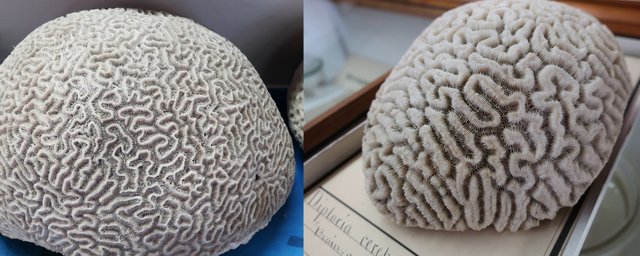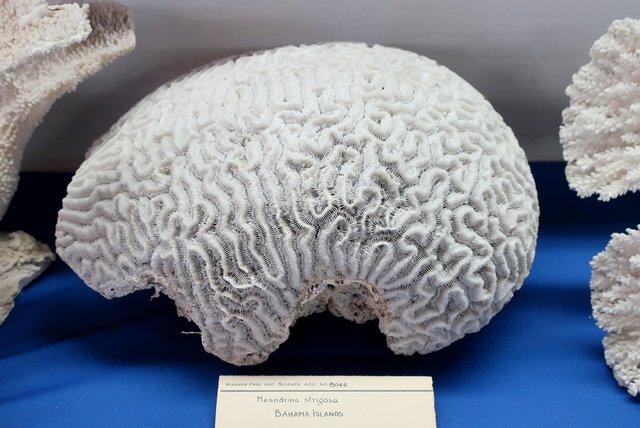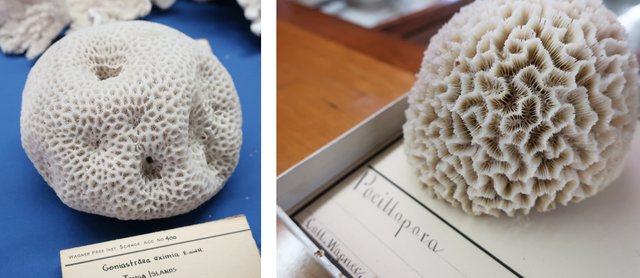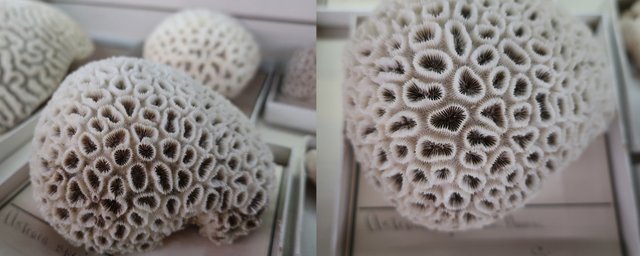A Brain? A Maze? No, it's Coral!
Stony Corals, or hard corals, are the reef builders of the world and exist in many different shapes and sizes. In fact, there are over 3,000 species of stony corals! While the Wagner museum does not have anywhere near 3,000 specimens of corals, we do have an entire case dedicated to them - Museum case 26. Many are from the collection of our founder, William Wagner. And the rest were either purchased or donated between 1889-1899.
Temple University-Wagner Fellow, Jena Osman, found inspiration in a single specimen of brain coral that led her down a long and varied path of research and finally to the creation of a poem. So today, we thought we would present a selection of corals similar to the brain coral specimen (#2917 WW). Maybe they will inspire you!

Left: Maze Coral, Meandrina labyrinthica (Bahamas), gift of J.W. Bunting. Accession #3335.
Right: Brain Coral, Diploria cerebriformis (West Indies), William Wagner Collection. Accession #2917 WW. Current scientific name Diploria labyrinthiformis.

Symmetrical Brain Coral, Meandrina strigosa (Bahamas), in exchange from Walter F. Webb Accession #8046. Current scientific name Pseudodiplora strigose.

Left: Goniastraea eximia (Tonga Islands), purchased from Henry A. Ward Accession #400. Current scientific name Goniastrea retiformis.
Right: Cauliflower or Brush Coral, Pocillopora, William Wagner Collection, Accession #2941 WW.

Astraea speciosa (Singapore), purchased from Henry A. Ward, Accession #397. Current scientific name Dipsastraea speciosa. And my favorite!
Next time: more about Jena Osman's reserach.
100% of the SBD rewards from this post will support continuation of fellowship program at the Wagner Free Institute of Science.

I love corals. I have a few pieces collected that were from relatives back when you were more open to take them. They look amazing with my various bones I collect as well. There is something about this skeletal bit of life that intrigues.
I agree! The corals and the starfish are among my favorite specimens in the museum.
very cool! i love these pieces. I am always amazed by all of the diverse marine life- it could take lifetimes of study. thanks for sharing.
Beautiful! Where would these corals have been harvested in 1899? Would they have been from along the East Coast? Down the Shore, perhaps?
None of these are local specimens. These are hard corals, mainly from the reefs of the Bahamas and the Caribbean. Also the South Pacific. I believe what you would find down the shore are soft corals.